10 Jan 2018
0 CommentsEnvironmental Awakening Fusing of Science, The Arts and Sea Ice
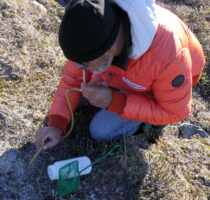
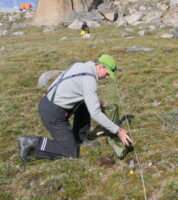

The Canada C3 expedition had myriad program elements, including being an ideal platform for science. In all, over 25 major scientific experiments took advantage of circumnavigating Canada’s coastline, the longest in the world, with much of that in Arctic waters. The experiments, a collaboration with major research institutes across Canada, gathered much needed baseline data such as:
- detailed monitoring of increasing levels of micro-plastics which are becoming a major component of the biomass in all oceans. Consider the micro-plastics you now potentially ingest when you eat seafood.
- DNA testing to determine the range of various ocean species and examine biodiversity.
- Sampling plant species range and diversity.
- Cataloguing Mites and other insect species.
- Studying the emergence of the Pizzly Bear, or Grolar, an unusual hybrid enabled by habit shifts due to climate change.
- Studying range and challenges of sea birds, again through climate change and human activity.
While none of these experiments were directly studying atmospheric carbon or climate directly, all exhibit the effects of these huge changes. That the Arctic is disproportionately impacted by climate change was directly visible to all participants. The temperature changes seen in polar regions are 3 times what we experience in the south, with our recent 1°C increase being more like 3°C up north. Thus, the Arctic is a harbinger of our own unmitigated climate future, making the Inuit ideal spokespeople to warn the rest of the world.
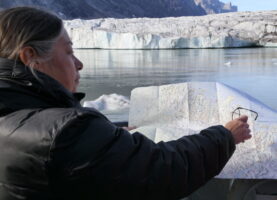
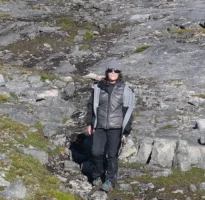

One of the great challenges faced by scientists is how share their stories in our modern, digital world in which a cacophony of voices clamber for our finite attention. The scientific method, honed over centuries, demands:
- A slow and deliberate process of discovery, given to evaluating conjectures — hence it may take years before the findings of the science projects on Canada C3 can be shared.
- A process favouring the probability of truth over certainty — makes it hard for scientists to metaphorically pound the table, which often puts scientific theories at a disadvantage to the general public who have no issue with asserting the truth of their, clearly less informed or even misinformed, statements.
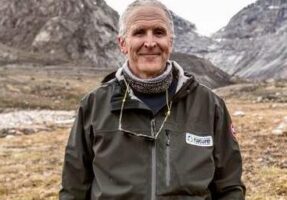
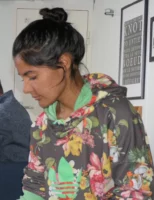
Thus, in communicating their knowledge, the challenge for scientists isn’t so much that they are the introverts of popular culture nor entirely that the science is perceived as dry and academic. In my many dialogues with scientists, the issue of finding new ways to communicate the important knowledge they possess to a populist audience, was a common lament. Scientists are ever searching to find new ways to help humanity truly understand their most portentous issues, such as Climate Change.
In this video, below, you can see one amazing scientist, Bianca Perren, explaining the tabular iceberg (see photos at the top of this article) that we saw when we came toward land from the Davis Strait. Bianca, being a painter, educator and Zodiac driver on top of her work as a palæoclimatologist and quarternary scentist at the British Antarctic Survey, is sending an emotionally powerful message about the last ice shelfs remaining in the Arctic. By the way, she also makes a cameo appearance in Al Gore’s recent film, An Inconvenient Sequel during work at Swiss Camp in Greenland.
Leveraging the incredible wealth of scientific talent, the wonderfully diverse set of participants helped weave a complex tapestry of knowledge and understanding. For me it was a once in a lifetime chance to participate in a rare melding of scientists working in an environment alive with poets, teachers, journalists, artists, community activists, indigenous and youth ambassadors. The eclectic combination created a magic environment while onboard, but gave some clues as to how to unlock the dilemma about communications with ordinary Canadians, both in planned and chance conversations.
Here is a brief rundown of a few of the remarkable participants just on Leg 7 of Canada C3:
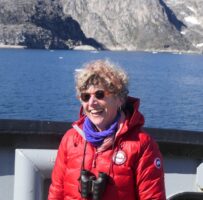


Lorna Crozier is a Governor-General Award winning poet, and Officer of the Order of Canada, living in Victoria. I was soo impressed by Lorna’s magic ability to help all of us “break through the ice” and reach new levels of understanding, for example with her poem, Polar, uniquely capturing our experience onboard. Phil Irish is a visual artist and teacher based in Elora who was selected to be one of 15 artists, one per Leg, through a fiercely competitive, Canada Council led selection process. Phil, constantly sketching and painting, inspired all of us with his visual perspective on our Leg 7 experience and built on his own environmentally driven recent practice. Likewise, Paul Rogalsi of Rouge Restaurant in Calgary, was one of 15 chefs, selected for Leg 7 from Food Day Canada chefs from coast to coast to coast. Paul was a thoughtful contributor not just gastronomically, but also as an avid environmentalist keen on sustainable living.
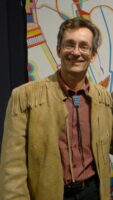
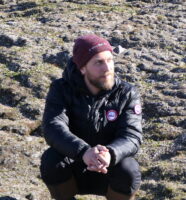
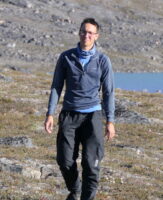
Peter Poole is a renaissance man who is deeply involved in his community of Banff, Alberta and the larger world. He is a change maker with a deep commitment to conservation and honouring indigenous elders which shine through in all of his endeavours. Through other projects, he is also a very good friend. Tony Dekker is the lead singer and songwriter for Canadian indie-folk group Great Lake Swimmers. Tony is a thoughtful and down to earth musician with a strong interest in nature and relationships. Even at 19 years of age, Benoit Dupras, a Youth Ambassador on Leg 7 from northern Québec, is on a course to change the world. He is indicative of a new generation of Francophone Canadian leaders and, in his case, he aims to be a major force to move Canada, and the world, away from fossil fuels to a green energy future.

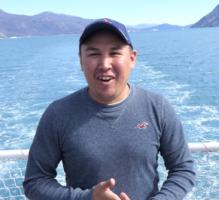
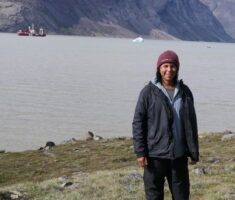
This last group represented Leg 7 participants from Canada’s Indigenous peoples, collectively, First Nations, Métis, and Inuit. In a later post, I will more fully explore some of the Reconciliation dialogue from Canada C3.
Taivitii (David) Lawson is an emerging Canadian Inuit leader originally from traditional lands near Pangnirtung and now living in Iqaluit. David was in the RCMP for 15 years and just prior to the Expedition, was about to embark on training to be a lawyer to “be an advocate for the Inuit people.” David has been an activist in a number of community issues, including suicide prevention through Embrace Life Council. Because David was a last minute replacement, there isn’t a bio on the C3 website. Joshua Stribbell is President, National Urban Inuit Youth Council and runs a program for Inuit youth in Toronto called Torontomiutaujugut. He grew up in Southern Ontario because his mother was adopted out in the Sixties Scoop. He has only recently started to re-connect with his Inuit heritage. A Youth Ambassador and member of the Matawa First Nation, born and raised in the urban setting of Thunder Bay, Tyler Waoose also aimed to re-connect with his ancestral heritage in the northern Canadian Arctic. Tyler is active in Roots to Harvest, engaging youth with agriculture and cultivating heathy communities.
Our onboard dialogues were both planned and an by chance encounter. We had an onboard, Hollywood level “Comms Team” of 6 people constantly shooting and producing amazing content to share with Canada and the world. As mentioned, the goal was to reach over 20 million Canadians, which I believe was handily achieved in channels as diverse as Facebook Live to traditional print journalism. As a result, even thought the participant base was limited, the majority of Canadian participated to greater or lesser degrees in the education and conversation about our future. I also committed to share in various ways, including writing a series of blog posts (like this one!).
One particularly important session was organized by very thoughtful participant Peter Poole. He had several scientists, youth, artists, indigenous people and other present their thoughts on what Climate Change meant to them both personally and professionally. Being involved in my own work to “reboot the narrative around climate change”, this particular session inspired and motivated me to carry on the conversations that Peter started. While there will be more on my initiative as it evolves, it was clear that this session got many to commit to being ongoing ambassadors and champions of the unique Climate Change perspectives from the north. Also, now in 2018, watch out for various more formalized Canada C3 Legacy Projects as they are unveiled during this year.
While I could go on endlessly about Canada C3 and the environment, hopefully this does give you a taste. Collectively, I can only give a small glimpse of how the Canada C3 expedition was a life-changing one for me and all participants. The learnings weren’t so much the hard science, but instead the storytelling and narrative challenges standing in the way of getting us all onboard.
To wrap up, just as Chef Paul Rogalski always reminded us that “The foundation of great food starts with the ingredients…’, so too does making the world better start with great people. I will leave the last word to none other than that master of words, Lorna Crozier. I love the picture she paints tying in so well, and viscerally, to the earlier words of scientists like Bianca Perren who has dedicated her life to Polar Climate Science. What action will you take in response.
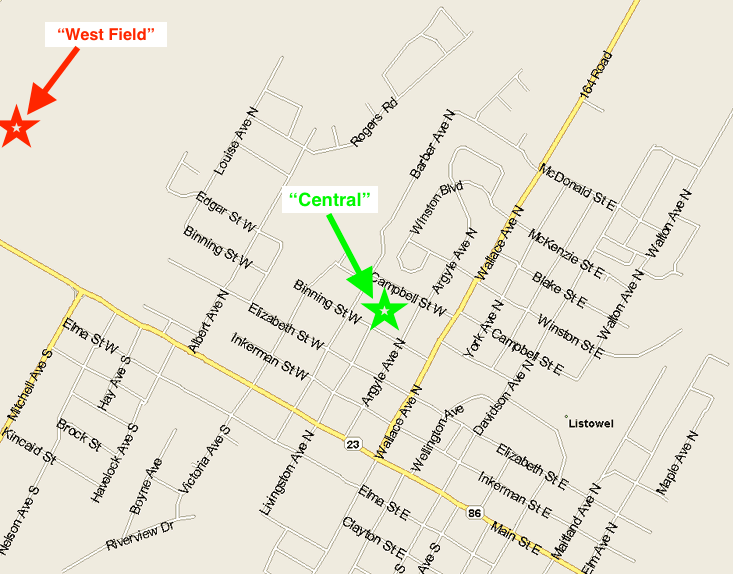

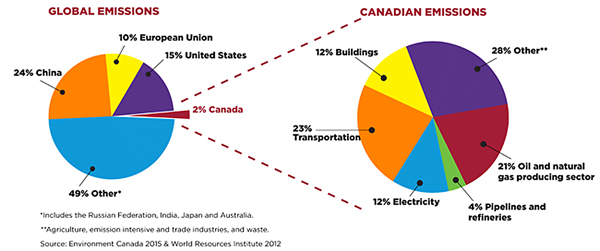

 In our 3rd year, some exciting changes are afoot as we see our vision for the Prize unfold.
In our 3rd year, some exciting changes are afoot as we see our vision for the Prize unfold.
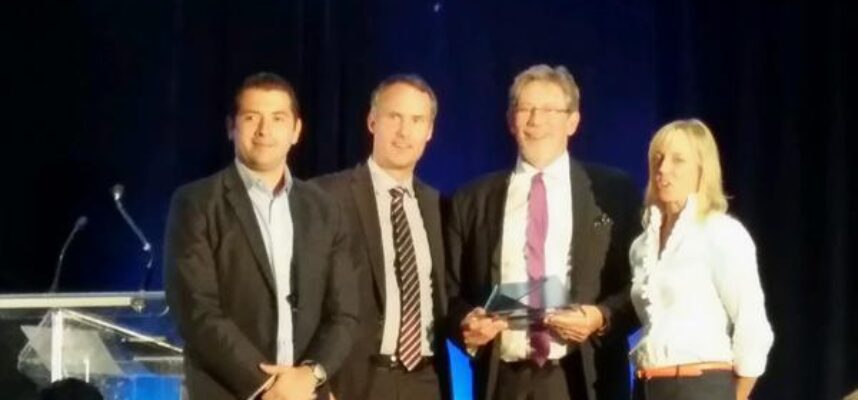
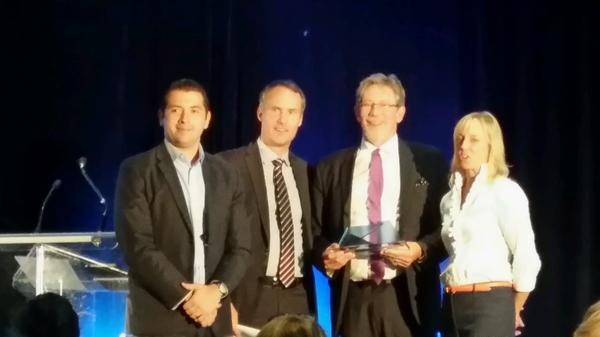
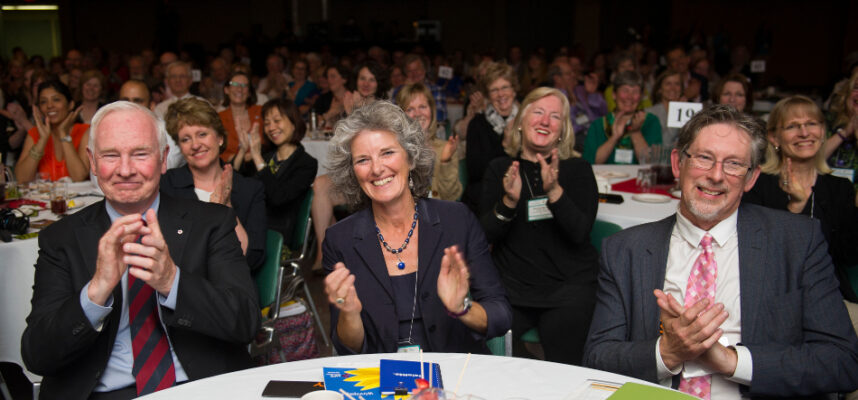
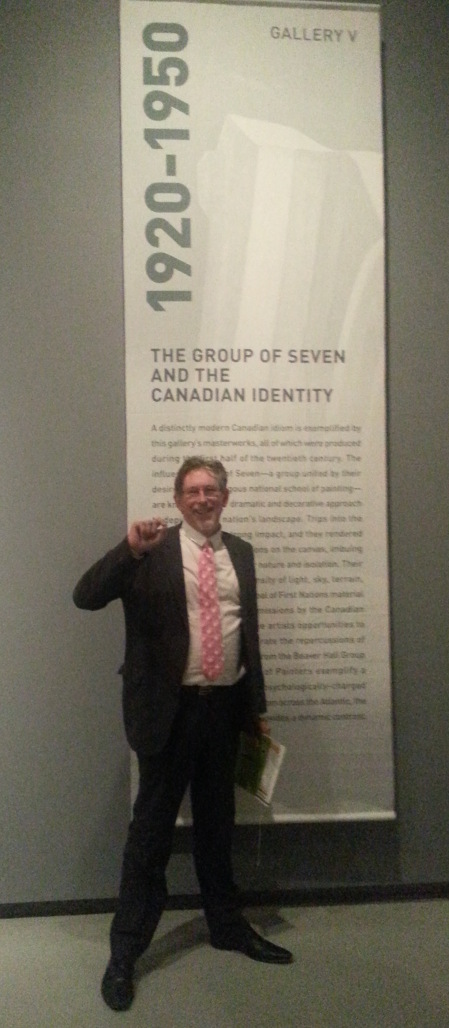 Shortly after WWI, an influential group of painters, the original
Shortly after WWI, an influential group of painters, the original 


 Bill Gates, partly at the instigation of Warren Buffet who added his personal fortune to that of Gates, left Microsoft, the company he built, to dedicate his life to innovative solutions to large world issues such as global health and world literacy through the
Bill Gates, partly at the instigation of Warren Buffet who added his personal fortune to that of Gates, left Microsoft, the company he built, to dedicate his life to innovative solutions to large world issues such as global health and world literacy through the 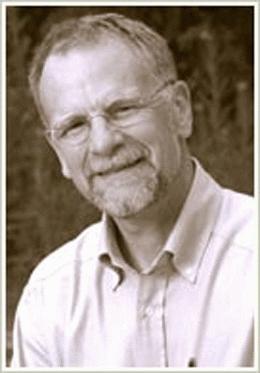 Started by Paul Brainerd, Seattle-based
Started by Paul Brainerd, Seattle-based  Jeffrey Skoll, a Canadian-born billionaire living in Los Angeles and an early employee of
Jeffrey Skoll, a Canadian-born billionaire living in Los Angeles and an early employee of 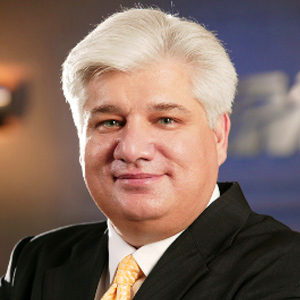 Waterloo’s own Mike Lazaridis aims to transform our understanding of the universe itself by investing hundreds of millions of dollars into
Waterloo’s own Mike Lazaridis aims to transform our understanding of the universe itself by investing hundreds of millions of dollars into 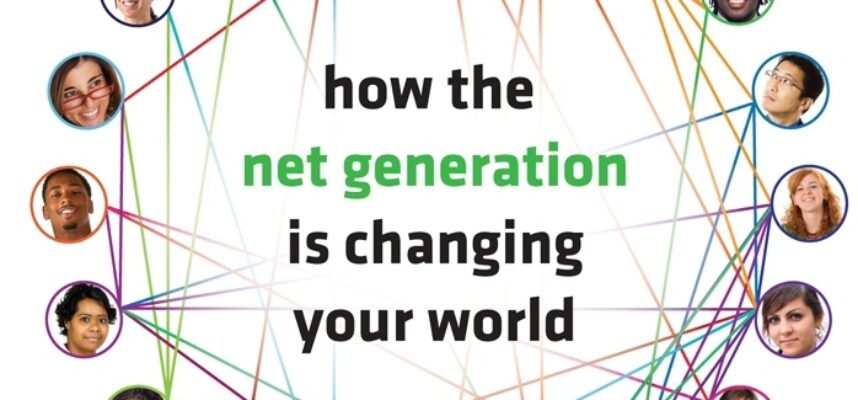
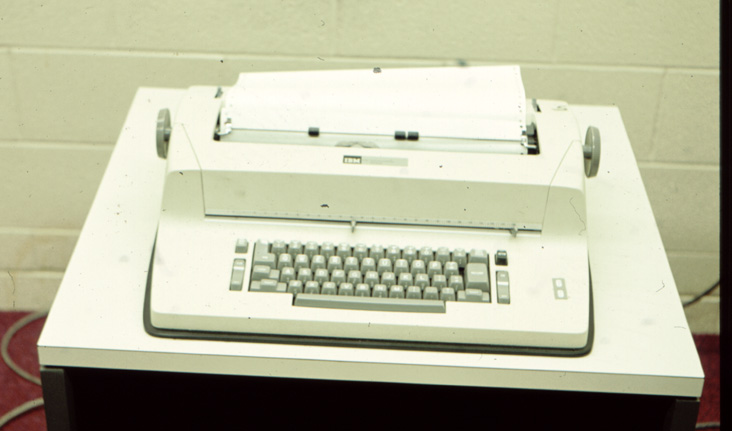 I first used computers at age 14, after being invited with a set of Math Contest winners to the University of Waterloo where I had the pleasure of using APL an early math-based timesharing system running on an IBM 360/44 . It is notable that, rather than learning the standard Fortran and programming on punch cards, I started programming using an IBM 2741, which is like an online IBM Selectric typewriter (typeball and all) connected via modem, with acoustic coupler, at 134.5 baud. Prior to this, I had read about computers and thought about them abstractly, but the plain truth is that computers were only accessible to a very small, privileged elite.
I first used computers at age 14, after being invited with a set of Math Contest winners to the University of Waterloo where I had the pleasure of using APL an early math-based timesharing system running on an IBM 360/44 . It is notable that, rather than learning the standard Fortran and programming on punch cards, I started programming using an IBM 2741, which is like an online IBM Selectric typewriter (typeball and all) connected via modem, with acoustic coupler, at 134.5 baud. Prior to this, I had read about computers and thought about them abstractly, but the plain truth is that computers were only accessible to a very small, privileged elite.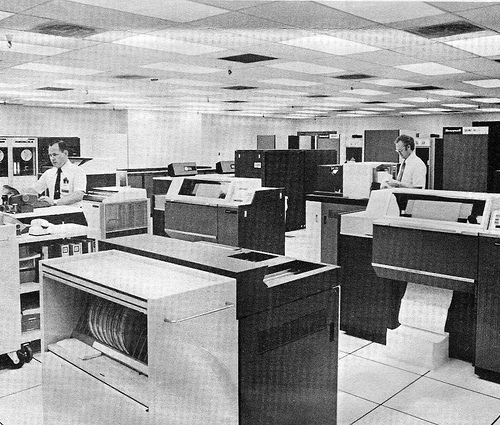 Recently, a friend sent me the directory listing of an old backup tape for the Honeywell 6050 TSS system which reminded me that I first used email in 1975. Yes, we even had mailbox and mbox files way back then. Of course, the email system only connected the almost 1000 users of this computer, yet barely two years later my friend Bill Pase then working at IP Sharp Associates, connected me into a truly global email system run by that pioneering firm. This is primarily of interest because many people I talk to assume that email began in the late 1990’s.
Recently, a friend sent me the directory listing of an old backup tape for the Honeywell 6050 TSS system which reminded me that I first used email in 1975. Yes, we even had mailbox and mbox files way back then. Of course, the email system only connected the almost 1000 users of this computer, yet barely two years later my friend Bill Pase then working at IP Sharp Associates, connected me into a truly global email system run by that pioneering firm. This is primarily of interest because many people I talk to assume that email began in the late 1990’s. Around 1990, while CEO at
Around 1990, while CEO at 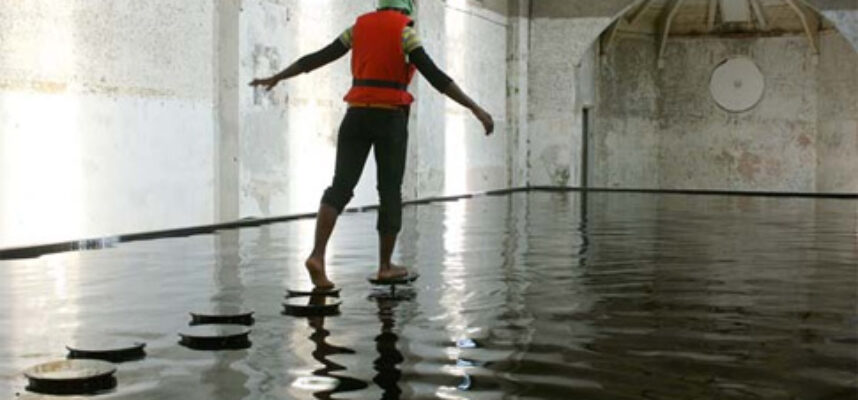

24 Sep 2021
0 CommentsA Personal Carbon Reduction Plan
Today is a Global Climate Strike in cities and towns all over the world. In late 2019, was a crescendo of activity including the first Global Climate Strike and UN Climate Summit. It feels almost like time, and action, has been paused by the COVID-19 pandemic. Now in late 2021 marks a return to that pivotal time. With a summer of extreme weather events including the most wildfires ever globally, we are entering a cycle including COP26 in Glasgow. And, for those of us who are boomers, the fact that these climate strikes are led by our youth and children, should add poignancy to the state of the world we have bequeathed the next generation.
As a society and as thoughtful citizens, how can we respond? Thinking beyond surviving the worst pandemic the rich world has experienced in our lifetimes, this is the perfect time to set priorities and make life plans and we must include addressing the greatest existential crisis challenging humanity and the world we live in.
Everywhere the sense of urgency has increased. Scientific models show that the amount of carbon we can pump into the atmosphere must be limited if we are to keep to an increase of between 1.5°C to 2.0°C, which already will be a much changed earth. This remaining capacity to emit carbon, also known as our Carbon Budget, is shrinking rapidly. Hence, each year that passes, such as between 2019 and now, means that living within this carbon budget requires more drastic action and at a much faster pace.
I strongly encourage everyone to take their own personal actions. They are so important to signal to others that the Climate Crisis is serious and to help mobilize action.
Systems Change
Personal actions will never be sufficient. We also need local, regional, country-wide and global systems change to accompany our personal actions. This might be described as re-jigging our long held systems of regulation, taxation and even the incentives in our market economy. In effect, we may be re-writing the rules of capitalism itself. Examples of this include:
We must keep up the pressure on our elected officials of all political stripes. While we are doing this, here are my thoughts on personal actions we can take. Its a complex topic, but by breaking into down into more digestible chunks, a seemingly intractable problem moves closer to solution. Here are the major categories I use, and note that I will provide further commentary on each in following posts:
Residential
While we can, and should, reduce our energy and electrical load through active management of our device choices and lifestyle, the biggest gains come from making our homes inherently more efficient.
I am currently designing and building such a sustainable, carbon zero (or negative) home in part to show a direction for the coming years. I hope that this will lead to real insights to help future homes be more sustainable, even the average house.
Of course, most homes aren’t new but have been around for 20, 30, 50 or even over 100 years. Retrofits of those homes are an important part of the mix. Audits against the Energuide for Houses standard help determine both your home’s energy rating, but to help define a path forward. Combing this with systems change, through financing or even property tax abatement to encourage this trend, is clearly the way forward. Systems change that encourages individual action is key. Even the august Conference Board of Canada has published a policy recommendation Green Homes: Sustainable Finance for Residential Retrofits. We can only hope that the appropriate levels of government are spurred into action.
Transportation
Personal transportation may represent over 30% of our personal carbon footprint. Note that I am, somewhat arbitrarily assigning logistics and freight to produce and deliver goods to us into the personal Consumption category below. While we can work to reduce our footprints by living in compact cities with lots of walking and bicycling, this does not work for all. The largest component is the electrification of transportation represented by the acceleration of the move from legacy ICE (Internal Combustion Engine) vehicles to EVs (Electric Vehicles). We are also starting to see this trend in small trucks and eventually event transport trucks. Beyond cars, I make several suggestions:
Consumption
Another aspect to consumption is excess packaging, much of which is made from plastics. Plastics pose enormous problems to our biosphere and in particular the oceans and so reducing or eliminating single use plastics is an urgent need. Further, most plastics are made from oil and hence are another form of fossil fuel consumption. I will soon write a ‘top 10’ list for ways to reduce your personal plastic and packaging footprint – which directly reduces your carbon footprint.
I hope that this provides a high level roadmap to both personal action, but also where public policy needs to go. Of course, it over simplifies a fiendishly complicated topic. At the same time, by dissecting de-carbonization I can only hope that it inspires action, at both a personal and government level.